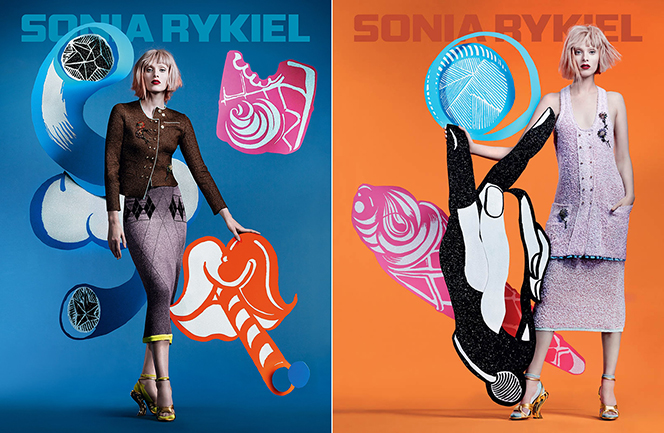French couturier and founder of her own fashion house: Remembering Sonia Rykiel
French couturier and founder of her own fashion house Sonia Rykiel. Sonya Rykiel was born on the outskirts of Paris on May 25, 1930 in the family of a Romanian watchmaker and his Russian wife. Sonya’s first husband, Sam Rykiel, was the owner of a knitwear store: she created her first knitted dresses, replenishing the range of the family store. In 1962, a sweater model appeared in a horizontal white-black-red-pink stripe — it had long sleeves and a short, tapered hem. A year later, Poor Boy Sweater (“Poor Boy’s Sweater”) hit the cover of Elle magazine (the aspiring singer Francoise Hardy posed in it) and popularity came to Rykiel. Brigitte Bardot, Catherine Deneuve and Audrey Hepburn appeared among Sonia Rykiel’s loyal clients, and after some time she divorced and, on the advice of her ex-husband, founded her own fashion house Sonia Rykiel in 1968. Rikel’ s business was very successful, and she was not afraid to take on new projects
She was called the “queen of knitwear,” but Ms. Rykiel also designed interiors for the Crillion Hotel in Paris (1972), a collection for a mail order catalogue, children’s clothes, accessories and perfume. In 2010, the fashion house Sonia Rykiel announced the creation of a collection of interior fabrics, in the same year an exhibition of Rykiel’s drawings was held in Paris.
Mah Jong sofa model, designed by Hans Hopfer. Roche Bobois. Upholstery and carpet by Sonia Rykiel Maison.
Chic home textiles are produced in collaboration with the famous French publisher Lelievre: in the collections of upholstery fabrics of bed linen, towels, pillows and blankets with the SR monogram, there are always bright saturated colors, a clear print and an original ornament.

Sonia Rykiel 2015 advertising campaign.

Underwear advertisement for H&M brand.

H& lingerie advertisement ;M.
In 2009, Rykiel was awarded the Legion of Honor for her contribution to the French fashion industry. In the same year, the brand launched a lingerie collection with the H&M brand. In 2010, Sonia Rykiel announced the creation of a line of interior fabrics, and in La Gallerie Catherine Houard hosted an exhibition of Rykiel
In 1995, having begun to suffer from Parkinson’s disease, she appointed her daughter Natalie to the post of General and Artistic Director of Sonia Rykiel. Fashion house Sonia Rykiel has been owned by First Heritage Brands, an investment fund of the Chinese Fung group, since 2012. Natalie Rykiel remains a consultant to the company. A year ago, Natalie Rykiel published a book describing her relationship with her sick mother and “the day your mother becomes your child.” “I dedicated my life to building the image of my mother, — Natalie writes. — I know it’s now a myth and a fashion icon. Her incredible fate is part of history.

Sonia Rykiel Spring-Summer 2014 advertising campaign. Photographer Craig McDean.
“She built her universe from the very beginning, with her own attitude to detail and sewing skills, — says Jean-Charles de Castelbajac. — She had her own view of woman and femininity, which did not separate a woman from society. Sonya Rykiel has always welcomed the initiatives of young designers. She and I have always believed that clothes are not only decoration, but also a manifesto. Her design — it’s a bridge between fashion, literature, and activism.”
